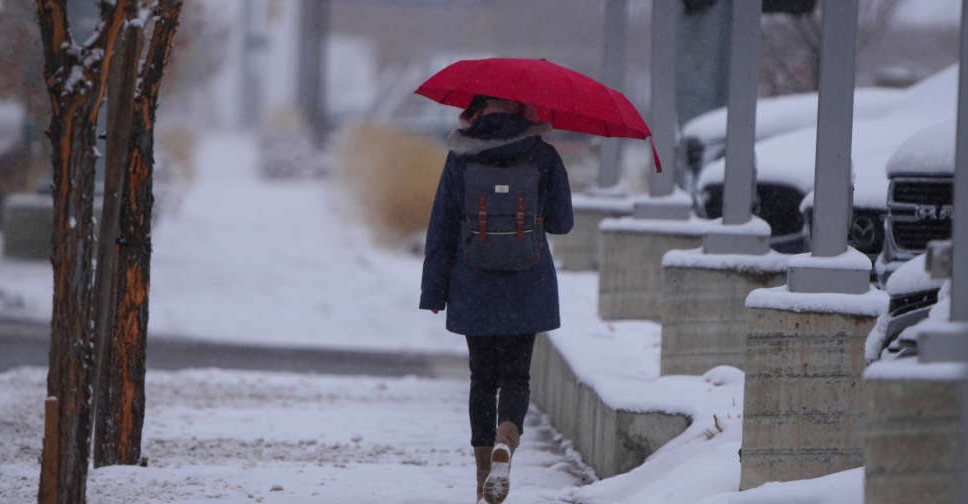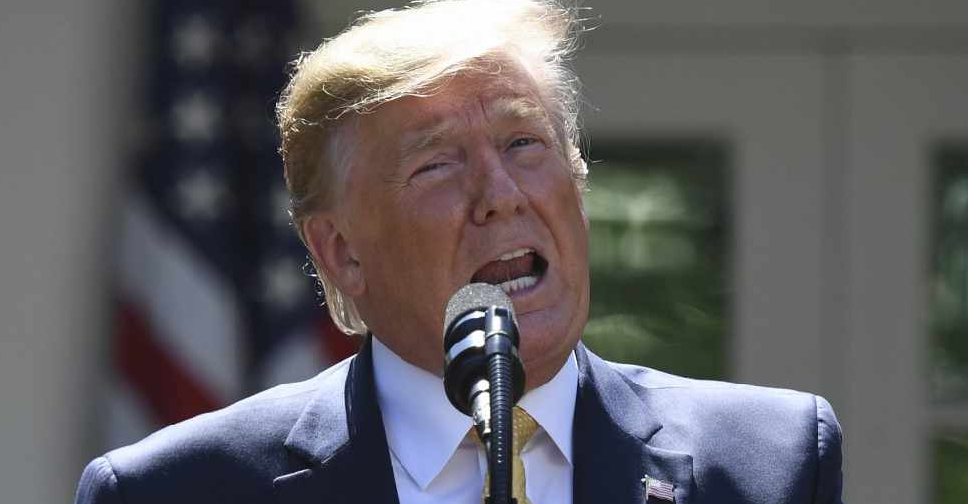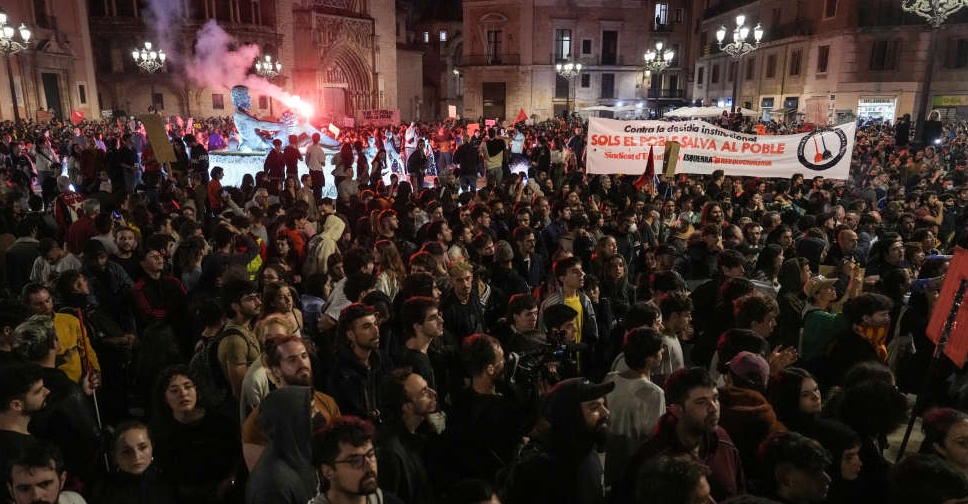
A massive winter storm system enveloped a vast stretch of the United States on Thursday, threatening to upend the travel plans of millions of Americans.
Leading into the holiday weekend, the storm is expected to bring blizzard conditions to the Great Lakes region, up to 2 inches of rain followed by a flash freeze on the East Coast, wind gusts of 60 miles (100 km) per hour and bitter cold as far south as the Mexican border.
As the storm moves over the Great Lakes, a weather phenomenon known as a bomb cyclone is expected to develop due to "the abrupt deepening of this low pressure system," the National Weather Service said.
In its wake, the cyclone could spawn snowfalls of a half inch an hour and winds of more than 50 mph (80 kph) in the Upper Midwest and interior Northeast, the weather service said.
Power outages were likely, and the storm was expected to make travel by land or air dangerous or impossible at times.
"It's dangerous and threatening," President Joe Biden said at the White House, urging Americans with travel plans to not delay and to set off on Thursday. "This is not like a snow day, when you were a kid, this is serious stuff."
More than half of the Lower 48 states, from Washington state to Florida, are under winter weather alerts, including wind chill advisories affecting about 135 million people, said Ashton Robinson Cook, a meteorologist at the weather service.
Parts of the Mid-Atlantic and Plains could see Christmas Day weather that is near the coldest on record, though record lows will not be as widespread as the storm, according to the weather service.
Philadelphia could see temperatures fall to 15 degrees Fahrenheit (minus 9 Celsius) on Sunday, near a previous low from 1943, while Sioux City, Iowa, could end up at minus 14F (minus 26C), surpassing a record from the 1980s.
Travel conditions, already bad in the Great Plains region, will gradually deteriorate in the Midwest and Great Lakes area as the cold front moves east and brings more than a foot of snow with it to some parts, Cook said.
Snow squalls — brief bursts of moderate to heavy snow and strong wind — are expected from Illinois to Indiana, and could produce whiteout conditions.
The American Automobile Association (AAA) estimates 112.7 million people plan to travel 50 miles (80 km) or more from home between December 23 and January 2, an increase of 3.6 million people over last year and closing in on pre-pandemic numbers.
Nearly 2,000 U.S. flights scheduled for Thursday and Friday have been cancelled, including more than 700 departures and arrivals at two major airports in Chicago, according to flight-tracking service FlightAware. Hundreds of flights have been canceled in Denver.
Many U.S. airlines have waived change fees and fare differences for passengers.
The frigid air mass that had already enveloped northern states was pushing south through central Oklahoma and northwestern Texas, where the mercury is expected to plunge to about 10F (minus 7C) on Thursday.
Combined with wind gusts of up to 60 mph (100 kph), wind chills could go as low as minus 40F (minus 40 C).
Temperatures in parts of the Southern Plains and Southeast could stay below freezing — 30-plus degrees less than normal — for multiple days, the weather service predicted.
Greg Carbin, chief of forecast operations at the Weather Prediction Center, said that freezing or below-freezing temperatures are expected to bisect Florida from Pensacola through Orlando to Daytona Beach. Temperatures could register about 25 degrees below normal.
"That's pretty darn chilly for Florida," he said.
Motorists in the Ohio and Tennessee valleys were warned that wet roads could instantly freeze over due to a rapid drop in temperatures.
The weather service also warned of freezing rain in parts of Oregon and Washington in the Northwest, where the storm originated, late Thursday.
Georgia on Wednesday joined North Carolina and Kentucky in declaring states of emergency. Temperatures in north Georgia were forecast to hit 10F (minus 12C) with subzero wind chills.
"We are expecting weather we haven't seen in a decade or more," Georgia Governor Brian Kemp said at a media briefing.
U.S. power and natural gas prices in the Midwest and West Coast soared to multiyear highs on Thursday.



 Republicans on brink of clinching US House control
Republicans on brink of clinching US House control
 Dozens killed, wounded in Israeli strike on Gaza's Jabalia
Dozens killed, wounded in Israeli strike on Gaza's Jabalia
 Qatar suspends Gaza ceasefire mediation
Qatar suspends Gaza ceasefire mediation
 Thousands protest over handling of Spanish flood disaster
Thousands protest over handling of Spanish flood disaster
